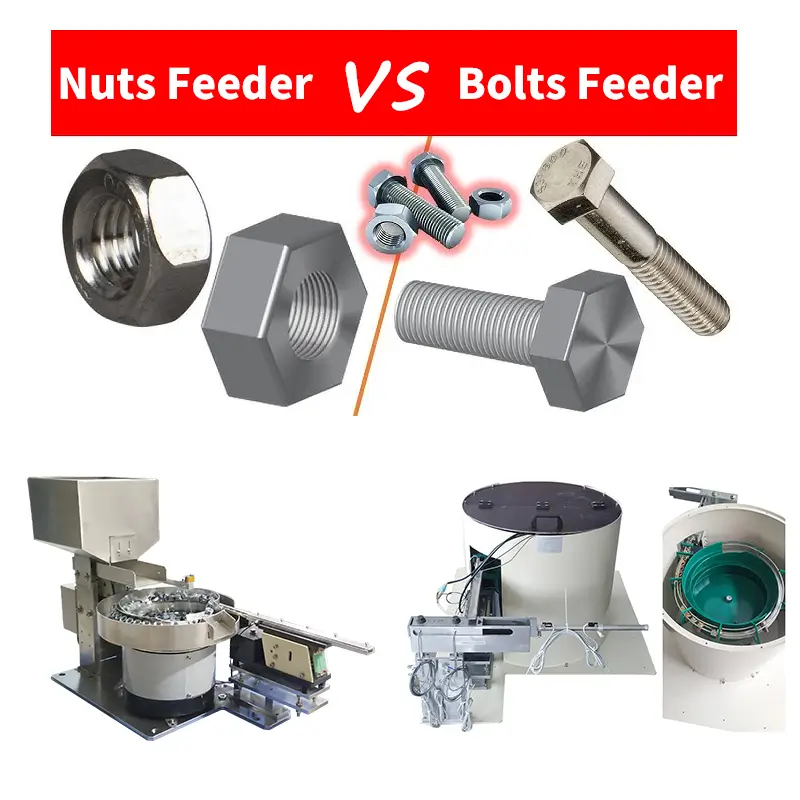Índice
Visão geral dos alimentadores de porcas e parafusos
Principais diferenças entre alimentadores de porcas e parafusos
Processo de alimentação
Usos em automação
Aplicações para Alimentadores de Parafusos
Personalização e configuração
Integração com sistemas de visão e robótica
Escolhendo o Fornecedor Certo
Entre em contato com a SWOER para soluções personalizadas
Introdução
Ao escolher um alimentador de tigela vibratória, é importante entender as diferenças entre alimentadores de porcas e parafusos. Ambos ajudam a melhorar os processos de automação, mas são projetados para necessidades diferentes. Este artigo explica seus recursos para ajudar você a fazer a escolha certa.
Principais diferenças entre alimentadores de porcas e parafusos
Detalhes do design:
Os alimentadores de porcas são projetados para lidar com formas planas, hexagonais ou quadradas, garantindo o alinhamento adequado. Os alimentadores de parafusos são construídos para manter o eixo e as roscas firmes durante a alimentação.
Processo de alimentação:
Os alimentadores de porcas usam vibração para girar e alinhar porcas para uma montagem suave. Os alimentadores de parafusos evitam rolar ou virar, garantindo que sejam apresentados corretamente.
Usos em automação
- Alimentadores de nozes: Comumente usados na fabricação de automóveis, os alimentadores de porcas fornecem fixadores de forma rápida e precisa para conexões seguras.
- Alimentadores de parafusos: Amplamente utilizados em eletrônicos e máquinas, os alimentadores de parafusos posicionam os parafusos corretamente para linhas de montagem automatizadas.
Personalização e configuração
Alimentadores de tigela vibratória para porcas e parafusos podem ser personalizados em tamanho, material e velocidade. Adicionar sistemas de visão ou braços robóticos melhora a precisão e reduz a necessidade de trabalho manual.
Vídeo do alimentador de nozes
Vídeo do alimentador de parafusos
Escolhendo o Fornecedor Certo
Trabalhe com um fornecedor experiente para obter sistemas de alimentação vibratória confiáveis. Projetos personalizados, recursos avançados e suporte podem melhorar seu processo de produção.



